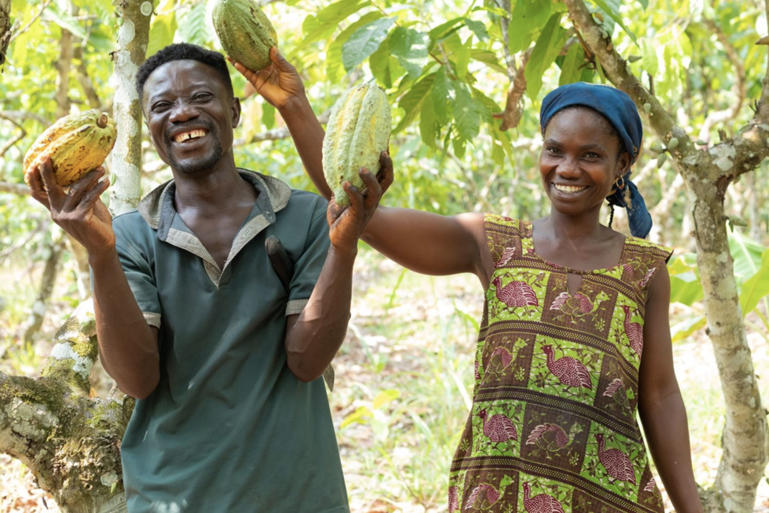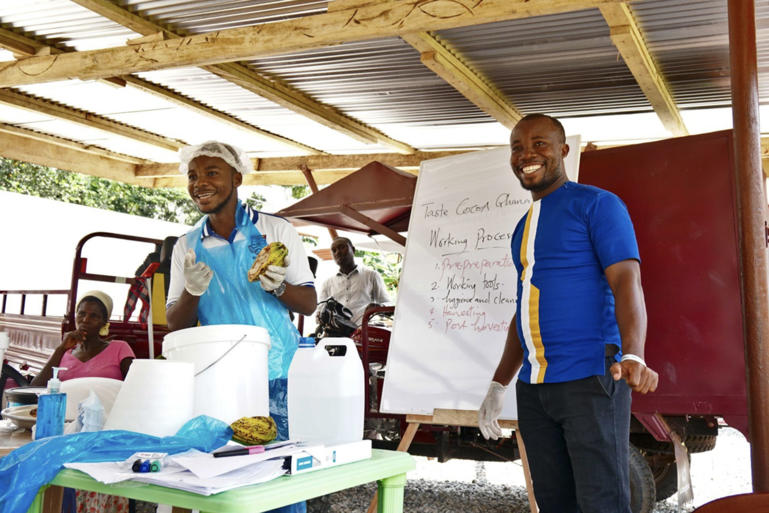Background
Agriculture forms the backbone of an estimated 500 million smallholder farmers’ livelihoods worldwide. While these farmers contribute significantly to global agricultural production, their continued output is contingent on reliable rainfall and a stable climate.
As droughts, floods, storms, and other extreme weather events increase in both magnitude and intensity, smallholder farming communities, global food supplies, and entire economies are exposed to greater risk. Yet only 5% of climate finance is directed towards climate adaptation, with just a fraction coming from the private sector.
There is a clear and urgent need to mobilise finance to support smallholder farmers to safeguard their livelihoods and ensure global food supplies do not collapse.
Innovative Partnership
The Landscape Resilience Fund (LRF) is an impact-driven, independent foundation that mobilises private and public climate finance for vulnerable smallholders and landscapes. The fund mobilises blended finance to provide technical and financial assistance to climate-smart small and medium-sized enterprises (SMEs) in the Global South. Embedded in a landscape approach, the LRF aims to foster economic development and innovation to improve the resilience of smallholder farmers and enable communities to effectively adapt to climate change.
Co-developed by South Pole and the Worldwide Fund for Nature (WWF), the LRF recognizes the critical role that rural communities can play in driving sustainable development. The LRF aims to mobilise $100m by 2026 for climate adaptation focused SMEs or projects that support sustainable agricultural and forestry supply chains. The LRF is managed by South Pole, while the WWF acts as an advisor and service provider.
The Global Environment Facility (GEF) has played a pivotal role in lending its support and credibility to the fund, having recognized the LRF as one of nine winning project concepts during its Challenge Program for Adaptation Innovation at COP25 in Madrid in 2019. This led to the GEF providing the LRF with grant support through its Least Developed Countries Fund and Special Climate Change Fund. This high-profile recognition enhanced the LRF’s opportunities for new partnerships. Chanel, is one such example, having stepped forward to serve as the LRF’s anchor investor.
The LRF is an innovative, impact-first fund, meaning funders do not receive a portion of the profits; instead, the fund re-invests repaid loans in other SMEs or projects, generating a self-sustaining financing tool that can be used to improve smallholder farmers income, sustainable land management, biodiversity conservation and climate adaptation.
SMEs supporting smallholder farmers play a vital role in effective climate resilience and adaptation, however, these SMEs can’t access the funding or build the capacity needed to scale quickly and reach more people. They have enormous potential for impact but are often considered too risky by commercial investors and lack access to affordable finance. The LRF helps to remove these hurdles by providing SMEs who work with smallholder farmers access to capital they would otherwise struggle to attract. Leaning on the knowledge and field expertise of its partners (South Pole and WWF), the LRF can better understand an SME’s current position in the market, the challenges it faces, and its potential, which leads to a more accurate assessment of the risk-return profile of the potential investment.
Solution
The LRF relies on a blended finance structuring approach that combines public, philanthropic, and private grant funding to finance sustainable adaptation solutions at scale.
It works across two pillars: “supporting climate-resilient SMEs” (capacity building and loans) and “landscape development”.
Whilst the LRF provides loans that are more concessional than a commercial investor (including lower interest rates and flexible repayment periods), the LRF structures them in a way that is as “market-based” as possible to encourage businesses to move away from their reliance on grants. The LRF also draws on technical assistance funding from the GEF to improve aspects of the SMEs that require additional support to attract investments. This funding might go towards improvements in an SME’s Environment and Social Management System (ESMS), developing the presentation of the SME’s financial results, business plan development, training and capacity building for management and smallholder farmers and amongst others, developing the SMEs approach to climate adaptation and resilience.
Many investors find it difficult to invest in these SMEs because they often expect a lower risk and higher financial return. As such, the LRF helps develop a pipeline of early-stage, and potentially riskier, projects and provides them with a platform to crowd in other investors. By blending the LRF’s capital with more return-seeking investor, the entire investment becomes more affordable. As an example, the LRF’s first loan announcement of USD$2m and active engagement with cocoa innovator Koa, has catalysed over USD$7.5m (and counting) in additional private investment. Koa will use the loan to set up a new processing facility in Ghana, increasing production capacity more than tenfold by 2024 and creating additional income for up to 10,000 cocoa farmers.
The LRF offers financing and technical assistance to SMEs, who in turn provide farmers with access to better farming equipment, training, and finance so they are empowered to address the challenges posed by climate change. The LRF also offers pre-investment support to innovative SMEs that show growth potential but are not yet ready for an LRF loan. This support aims to help SMEs to develop their business model and internal capacity, assist those that require additional monitoring of their socio-economic and environmental benefits, or match SMEs with other potential private investors. The LRF provides (reimbursable) grants or direct services to help the SME prepare for an LRF loan in the future as well as for financing opportunities from other investors.
As expected, the LRF has encountered some barriers in scaling investments in SMEs and projects contributing to sustainable food and land use systems. A particular challenge is the perceived risk and transaction costs involved for investors, as well as (in certain cases) the lack of capacity and risk appetite from domestic financiers. In addition, building a pipeline of SMEs and projects has been challenging and the LRF team is working to create a more transparent, community-driven approach to sharing it amongst the investment sector.
Expected Impact
The LRF has developed a strong pipeline of more than 40 SMEs in Sub-Saharan Africa, Southeast Asia, and Latin America, and is currently active in Ghana, Vietnam and Brazil.
- Target impact of $100m funding by 2026:
- 500,000 people living in landscapes vulnerable to climate change will have increased resilience and strengthened livelihoods.
- 200,000 hectares under sustainable land management.
- Increased biodiversity from 10,000–20,000 additional hectares under conservation.
- Reduction of 2,080,000 metric tonnes of CO2.
- Every $1m investment from the LRF could unlock up to $3m additional finance from commercial investors, for climate-resilient SMEs.
Philanthropies, impact investors and public funders can support locally led climate adaptation solutions through the Landscape Resilience Fund (LRF). If you are interested to learn more about the Landscape Resilience Fund, or wish to get involved, please reach out at contact@landscaperesiliencefund.org.
Sources
- https://landscaperesiliencefund.org
- https://www.southpole.com/news/new-climate-resilience-fund-brings-private-and-public-climate-finance-to-vulnerable-landscapes-and-farmers
- https://www.thegef.org/newsroom/news/building-space-where-finance-and-nature-meet
- https://www.thegef.org/newsroom/press-releases/winners-gef-challenge-program-adaptation-innovation-announced
- Interview with Joe Measom (Investment Manager) and Florence White (Associate Specialist)


